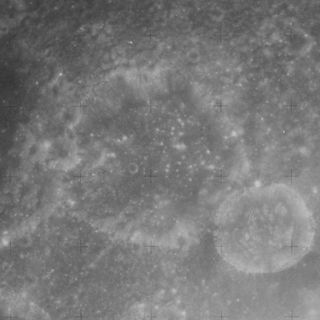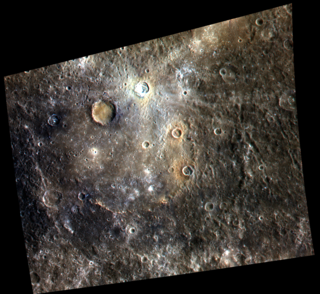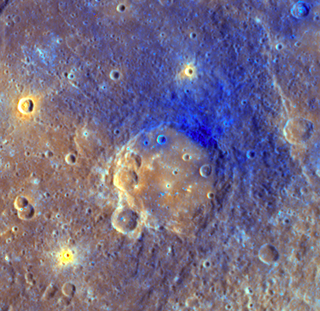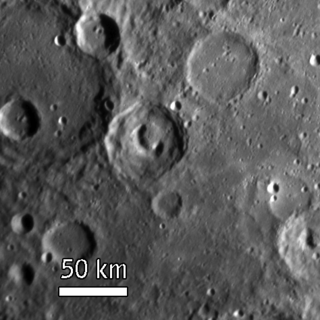
Back is a small lunar impact crater that is located near the eastern limb of the Moon. It lies on the northwest edge of the Mare Smythii, and the northeast rim is adjacent to the crater Schubert. To the west is Jenkins, and to the southwest is the Weierstrass–Van Vleck crater pair.

Schubert is a lunar impact crater that lies near the eastern limb of the Moon's near side. It is located northwest of the Mare Smythii, and southwest of the prominent crater Neper. Nearly attached to the southern rim is the crater Back.

Jenkins is a lunar impact crater that lies along the equator of the Moon, near the eastern limb. It is attached to the eastern rim of the slightly larger crater Schubert X, intruding somewhat into the interior. The crater Nobili is likewise attached to the western rim of Schubert X and intrudes slightly into the interior on that side. The three craters form a linear chain along the equator.

Nobili is a lunar impact crater that lies near the eastern limb of the Moon, giving it a foreshortened appearance when viewed from the Earth. The crater overlies the western rim of the slightly larger crater Schubert X, and the eastern rim of this satellite crater is overlain in turn by Jenkins, resulting in a triple crater formation. To the south lies Gilbert.

Suisei Planitia is a large area of smooth plains on Mercury, approximately 570 km wide. Ghost craters are unusual forms that occur in the Suisei Planitia. They are buried and rounded in profile, with only their rim crests rising above the surrounding smooth plains. It has been suggested that material forming Suisei Planitia is ejecta from the impact that formed Caloris Planitia. The name for this Planitia was approved in 1976 by the IAU.

Bach is a double-ringed impact basin within the Bach quadrangle of Mercury. It was named by the IAU in 1976.

Matisse is an impact crater on the southern hemisphere of Mercury. Matisse takes its name from the French artist Henri Matisse, and it was named by the IAU in 1976.

Raphael is a crater on Mercury. Its name was adopted by the International Astronomical Union (IAU) in 1976, and is named for the Italian painter Raphael. It is Tolstojan in age. The crater was first imaged by Mariner 10 in 1974.

Homer is a crater on Mercury. It is one of 110 peak ring basins on Mercury. It is Tolstojan in age.

Praxiteles is a crater on Mercury. It is one of 110 peak ring basins on Mercury.

Titian is an impact crater on the planet Mercury. It was named by the IAU in 1976.

Beckett is a pit-floored crater on Mercury, which was discovered in January 2008 during the first flyby of the planet by the MESSENGER spacecraft. The crater was named in November 2008 by the IAU.

Raden Saleh is a crater on Mercury. Its name was approved by the IAU in 2008, and it is named after a famous Indonesian painter named Raden Saleh.

Calvino is a crater on Mercury. Its name was adopted by the IAU in 2016, after the Italian writer Italo Calvino.

Dominici is a crater on Mercury. It was named by the IAU in 2010.

Ahmad Baba is a crater on Mercury. It has a diameter of 127 kilometers. Its name was adopted by the International Astronomical Union (IAU) in 1979.

Chekhov is a crater on Mercury. It has a diameter of 194 kilometers. Its name was adopted by the International Astronomical Union (IAU) in 1976. Chekhov is named for the Russian author Anton Chekhov, who lived from 1860 to 1904.

Janáček is a crater on Mercury. It has a diameter of 47 kilometers. Its name was adopted by the International Astronomical Union (IAU) in 1985. Janáček is named for the Czech composer Leoš Janáček, who lived from 1854 to 1928. The MESSENGER Mercury orbiter crashed near the crater on 30 April 2015.

Jókai is a crater on Mercury. Its name was adopted by the International Astronomical Union (IAU) in 1979. Jokai is named for the Hungarian novelist Mór Jókai, who lived from 1825 to 1904.




















